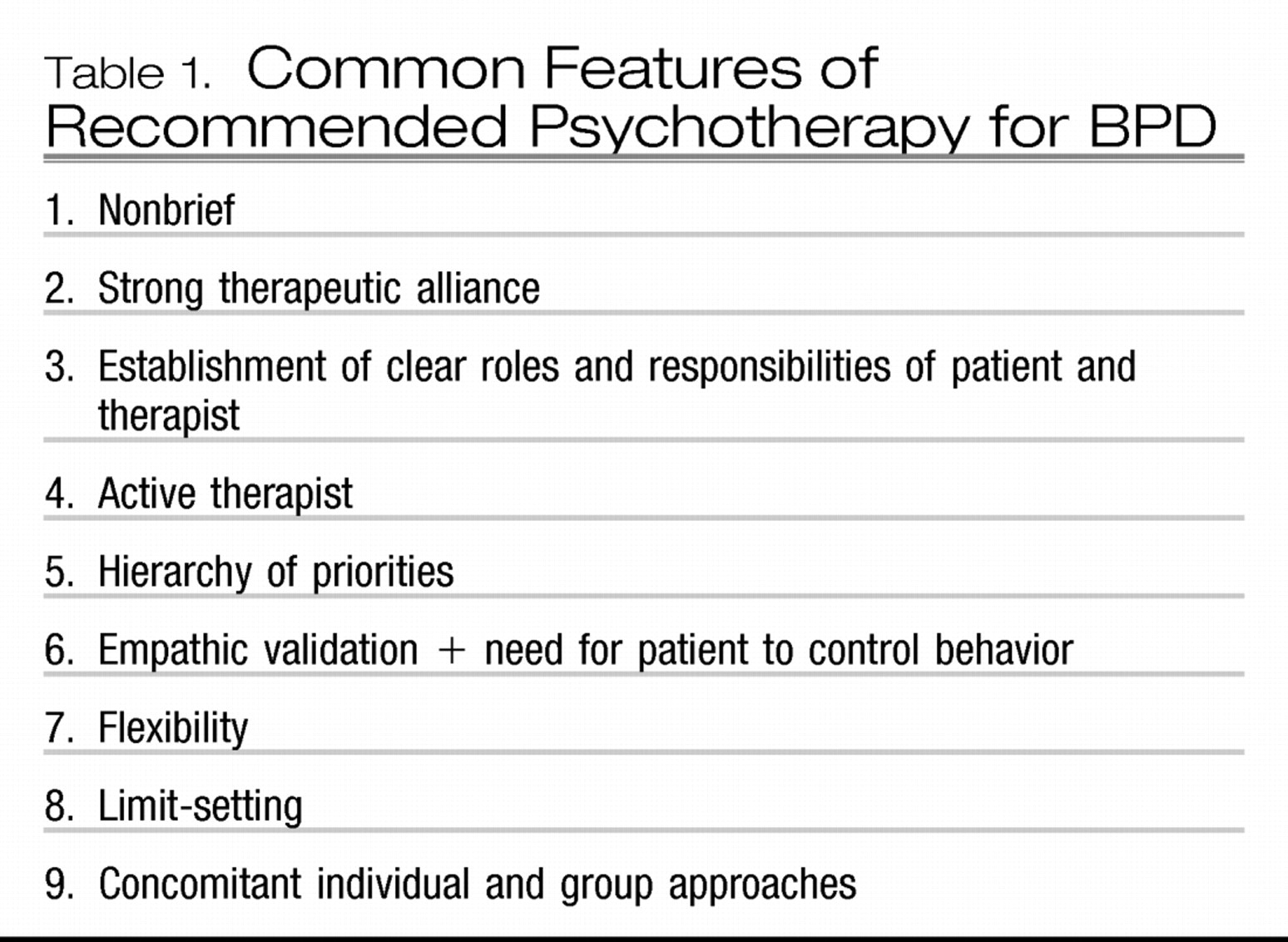I have been treating patients with borderline personality disorder for 25 years with a traditional psychotherapy approach, and my patients get better over time. I have read so much about dialectical behavior therapy; is it a more effective approach for these patients?
Your question is particularly important and one that many practitioners ask. Dialectical behavior therapy (DBT) is an extremely valuable treatment strategy for many patients with borderline personality disorder (BPD), and it was the first “manualized” therapy for BPD that was studied in randomized controlled trials (RCTs), demonstrating its beneficial effects for these patients (
1,
2).
It is important to recognize that patients who meet DSM-IV-TR diagnostic criteria for BPD are not a single homogeneous group. The polythetic system defines the diagnostic threshold for BPD as any five of the nine criteria for BPD, which results in 256 different combinations of criteria that meet the diagnostic threshold. It is no surprise, then, that treatment studies do not support a “one size fits all” pattern. When colleagues ask me questions such as “Are you a Kernbergian, a Kohutian, or a Fonagian?” I generally reply by saying “that's the wrong question—you first need to describe the borderline patient you have in mind, and then we'll think about which treatment approach might be best for that patient.” Even then, it seems probable that a given patient might benefit from more than one type of psychotherapy, and many variables determine the type of therapy selected, such as patient preference, therapist preference (or special training), therapist availability, and the limits of insurance coverage. Plakun et al. (
3) described a “Y” model of psychotherapy, emphasizing that many therapies have common core features (the stem of the “Y”) such as negotiating and maintaining a therapeutic alliance, and specific treatments have specialized features (the branches of the “Y”), such as a psychodynamic focus or a cognitive behavior focus (
3).
Zanarini (
4) recently reviewed psychotherapy for BPD, emphasizing that a strong RCT evidence base now exists for four types of therapy: mentalization-based therapy (MBT) (
5,
6), transference-focused psychotherapy (TFP) (
7), DBT, and schema-focused therapy (SFT) (
8), and the good news is that all of them have been shown to be effective treatments for patients with BPD. Other forms of therapy are also being studied, such as cognitive behavior therapy (CBT) (
9) and systems training for emotional predictability and problem solving (STEPPS) (
10). Overall, meta-analyses have demonstrated efficacy for both cognitive behavior and psychodynamic approaches (
11,
12).
In my opinion, there are key common features of these psychotherapeutic approaches to treatment of patients with BPD (
Table 1). I believe that the two most important goals in treatment are 1) establishing a therapeutic alliance and 2) time. The therapeutic alliance does not imply a “warm and fuzzy” relationship. For example, Bateman and Fonagy (
5,
6) stressed that the therapist needs to serve as the container for the patient's “alien self.” But the therapist must remain a steady vessel and never forget the attachment pathology that is so characteristic of patients with BPD and leads to their distrust of others and their consequent testing behavior in relationships with others (including the therapist). The second goal is time. For psychotherapy to work, it requires enough time to do so. I compare it to learning a second language, which activates brain systems involved in long-term learning and memory, with the potential to change the brain. A few drop-in sessions won't suffice!
So to return to the question, I do not believe that DBT represents the only effective type of psychotherapy for BPD, although it is a very good one. Many therapists use a mix of cognitive and psychodynamic approaches, or they use different approaches at different stages of treatment. Adhering to a manualized approach may help therapists keep a good grip on the therapeutic rudder early in their career, and, if so, that's fine, because steering the boat to reach calm waters and dry land is essential!


